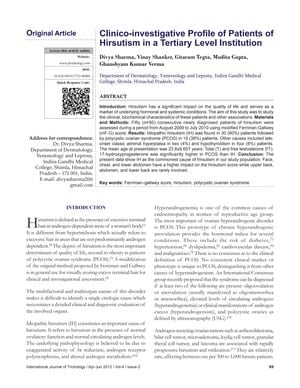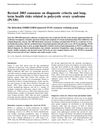Clinico-Investigative Profile of Patients with Hirsutism in a Tertiary Level Institution
January 2012
in “
International Journal of Trichology
”

TLDR Most hirsutism patients had idiopathic hirsutism or PCOS, with hormonal imbalances and signs like acne and irregular periods.
The study conducted between August 2009 and July 2010 included 50 newly diagnosed hirsutism patients and found that idiopathic hirsutism (IH) was the most common cause, affecting 60% of patients, followed by polycystic ovarian syndrome (PCOS) in 38%. The mean age of participants was 23.8 years, and the modified Ferriman Gallwey (mF-G) score was used for clinical assessments. Hormonal analysis indicated higher levels of total and free testosterone, and 17-hydroxyprogesterone in PCOS patients compared to those with IH. Additionally, 50.8% of patients had irregular menstrual cycles, with 64.2% of these patients diagnosed with PCOS. Acne was the most common sign of hyperandrogenism, present in 60% of patients, and obesity was observed in 20% of the study population. The study concluded that hirsutism could be a marker for underlying hormonal and systemic conditions, and while PCOS patients showed more signs of hyperandrogenism, a detailed investigative approach was necessary for the idiopathic group. The study's limitation was its small sample size, suggesting that a larger sample might lead to a lower cutoff for the mF-G score.
